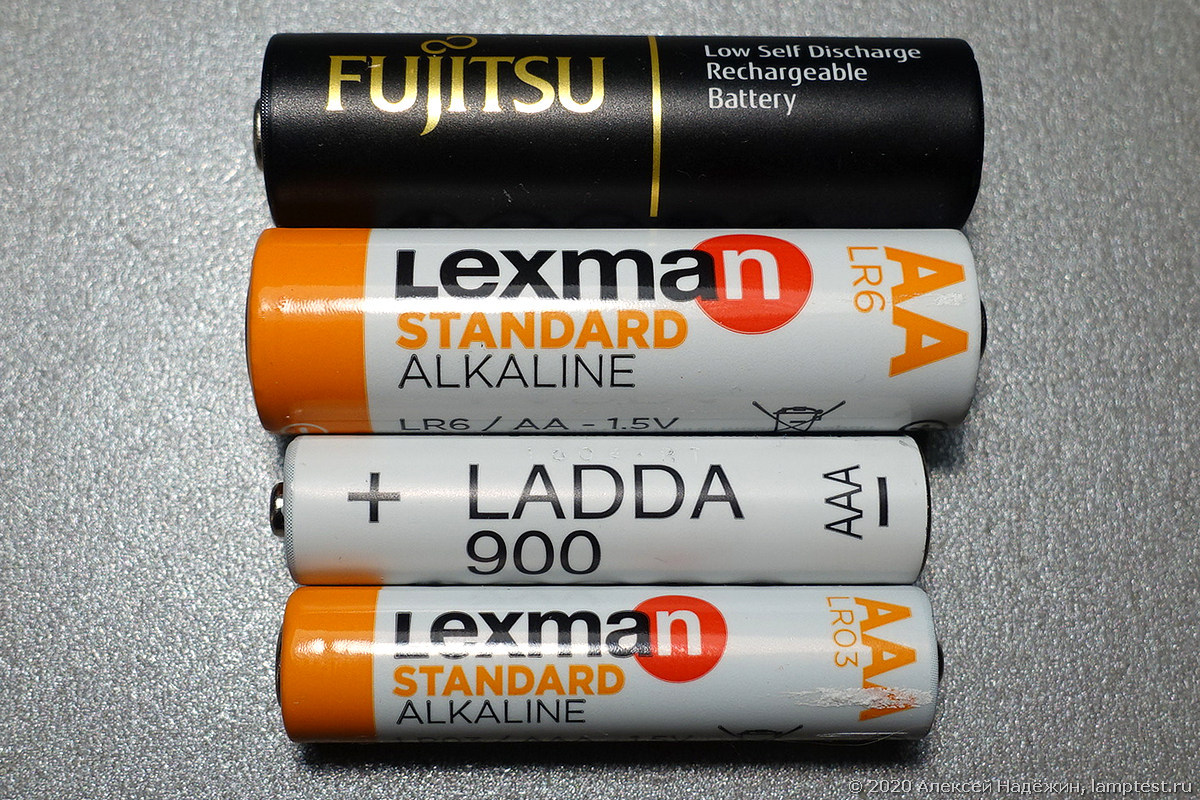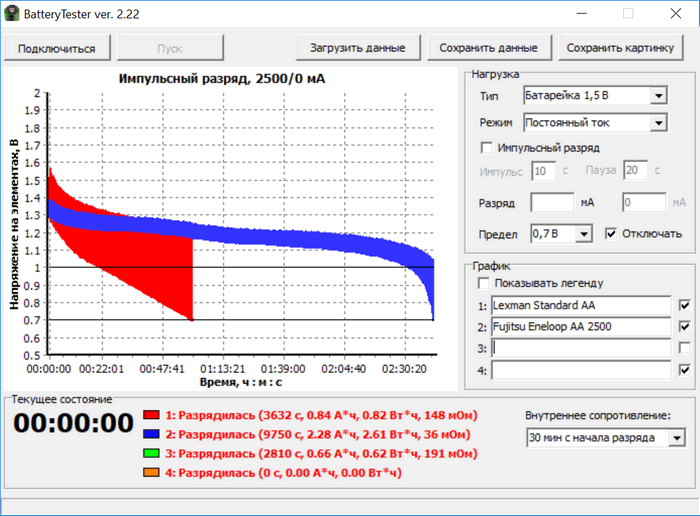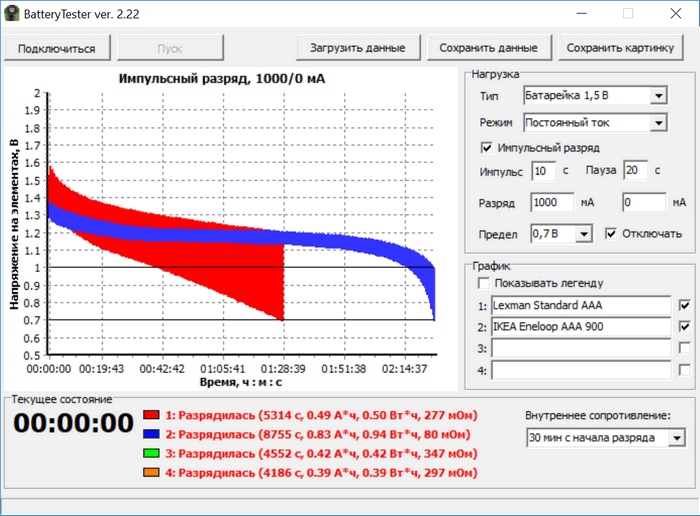For the test, good Lexman batteries and batteries using Eneloop technology were used - Fujitsu AA 2500 mah and IKEA LADDA AAA 900 mAh.

To test the capacity and load capacity, the batteries and accumulators were discharged in three modes:
- Discharge with direct current 200 mA. Such a load is inherent in electronic toys;
- Pulse discharge (10 seconds load, 20 seconds pause) 2500 mA for AA batteries and 1000 mA for AAA. This load is inherent in powerful devices;
- Discharge in "constant resistance" mode with an initial current of 1000 mA. This mode emulates the operation of a flashlight or devices with electric motors.
The measurements were made at a discharge to a voltage of 0.7 V.
Discharge with a constant current of 200 mA

Energy delivered:
AA: battery - 2.97 Wh, battery - 2.52 Wh;
AAA: battery - 1.08 Wh, battery - 1.00 Wh;
AA batteries provide 15% more power and AAA batteries 7% more.
Although the initial voltage on the batteries is lower, after a third discharge it becomes equal to the voltage on the batteries. When the batteries are discharged by 10%, the voltage drops to 1.4 V, and then when the batteries are discharged to 90%, it gradually drops to 1 V. Batteries behave differently. At the first 30% of the discharge, the voltage gradually drops from 1.4 to 1.2V, and then remains almost unchanged until the battery is discharged by 90%, in the last 10% of the battery's operation, the voltage begins to drop to 1V and below.
Discharge in "constant resistance" mode with an initial current of 1000 mA

Energy delivered:
AA: battery - 3.02 Wh, battery - 1.55 Wh;
AAA: battery - 1.08 Wh, battery - 0.59 Wh;
Under heavy load, AA batteries provide 49% more power and AAA batteries 45% more.
With such a load, the voltage on the batteries drops below the voltage on the batteries after 1% of the discharge!
Discharge by pulses of 2500 mA (10 seconds load, 20 seconds pause)

The given energy: battery - 2.61 Wh, battery - 0.82 Wh;
Under ultra-high load, the difference between batteries and rechargeable batteries becomes even greater: the battery provides more than three times more energy.
The graph clearly shows that the voltage under load of the battery is higher from the first second of discharge.
The battery can withstand a much larger load, so the voltage difference when applying and removing the load is not large (about 0.1 V), and in the battery it reaches 0.5 V.
Discharge with 1000 mA pulses (10 seconds load, 20 seconds pause)

Delivered energy: battery - 0.94 Wh, battery - 0.50 Wh;
Exactly the same picture when discharging AAA batteries with an extra-high current.
the battery provides almost twice as much energy and the voltage on it is higher during the entire discharge.
From my experiments, the following conclusions can be drawn:
- Batteries provide advantages in all modes, but a particularly big difference is observed when feeding a powerful and super-powerful load - the battery can provide three or more times more energy.
- Despite the fact that the nominal voltage of the batteries is less (1.2 V, and 1.5 V for batteries), in fact, during the discharge process, it becomes higher than that of batteries (from the very beginning with a large load and after about a third of the discharge with a small one).
- It is not very advisable to use batteries in devices with very low consumption (watches, remotes), where batteries are changed less often than once a year.
- In devices, batteries in which "run out" more often than once a year, the use of batteries provides not only savings, allows you to take care of the environment, but also provide longer work without recharging (changing batteries).
© 2020, Alexey Nadezhin